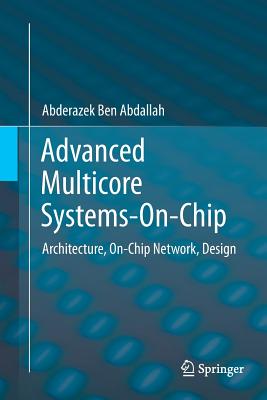Architectural and Operating System Support for Virtual Memory
暫譯: 虛擬記憶體的架構與作業系統支援
Bhattacharjee, Abhishek, Lustig, Daniel, Martonosi, Margaret
- 出版商: Morgan & Claypool
- 出版日期: 2017-09-29
- 售價: $2,440
- 貴賓價: 9.5 折 $2,318
- 語言: 英文
- 頁數: 175
- 裝訂: Quality Paper - also called trade paper
- ISBN: 1627056025
- ISBN-13: 9781627056021
-
相關分類:
Operating-system
海外代購書籍(需單獨結帳)
相關主題
商品描述
This book provides computer engineers, academic researchers, new graduate students, and seasoned practitioners an end-to-end overview of virtual memory. We begin with a recap of foundational concepts and discuss not only state-of-the-art virtual memory hardware and software support available today, but also emerging research trends in this space. The span of topics covers processor microarchitecture, memory systems, operating system design, and memory allocation. We show how efficient virtual memory implementations hinge on careful hardware and software cooperation, and we discuss new research directions aimed at addressing emerging problems in this space.
Virtual memory is a classic computer science abstraction and one of the pillars of the computing revolution. It has long enabled hardware flexibility, software portability, and overall better security, to name just a few of its powerful benefits. Nearly all user-level programs today take for granted that they will have been freed from the burden of physical memory management by the hardware, the operating system, device drivers, and system libraries.
However, despite its ubiquity in systems ranging from warehouse-scale datacenters to embedded Internet of Things (IoT) devices, the overheads of virtual memory are becoming a critical performance bottleneck today. Virtual memory architectures designed for individual CPUs or even individual cores are in many cases struggling to scale up and scale out to today's systems which now increasingly include exotic hardware accelerators (such as GPUs, FPGAs, or DSPs) and emerging memory technologies (such as non-volatile memory), and which run increasingly intensive workloads (such as virtualized and/or "big data" applications). As such, many of the fundamental abstractions and implementation approaches for virtual memory are being augmented, extended, or entirely rebuilt in order to ensure that virtual memory remains viable and performant in the years to come.
商品描述(中文翻譯)
這本書為計算機工程師、學術研究者、新畢業生以及資深從業者提供了虛擬記憶體的端到端概述。我們首先回顧基礎概念,然後討論當前可用的最先進虛擬記憶體硬體和軟體支援,以及這一領域的新興研究趨勢。主題範圍涵蓋處理器微架構、記憶體系統、作業系統設計和記憶體分配。我們展示了高效的虛擬記憶體實現如何依賴於硬體和軟體的精心合作,並討論了旨在解決這一領域新興問題的新研究方向。
虛擬記憶體是一個經典的計算機科學抽象,也是計算革命的支柱之一。它長期以來使硬體靈活性、軟體可攜性以及整體安全性得以提升,這只是它強大好處中的幾個例子。如今幾乎所有用戶級程序都理所當然地認為,它們將不再承擔物理記憶體管理的負擔,這一任務由硬體、作業系統、設備驅動程式和系統函式庫來完成。
然而,儘管虛擬記憶體在從大型數據中心到嵌入式物聯網(IoT)設備的系統中無處不在,但虛擬記憶體的開銷正成為當前一個關鍵的性能瓶頸。為單個 CPU 或甚至單個核心設計的虛擬記憶體架構在許多情況下難以擴展到當今的系統,這些系統越來越多地包含異構硬體加速器(如 GPU、FPGA 或 DSP)和新興的記憶體技術(如非揮發性記憶體),並且運行越來越密集的工作負載(如虛擬化和/或「大數據」應用)。因此,許多虛擬記憶體的基本抽象和實現方法正在被增強、擴展或完全重建,以確保虛擬記憶體在未來幾年內仍然可行且高效。











